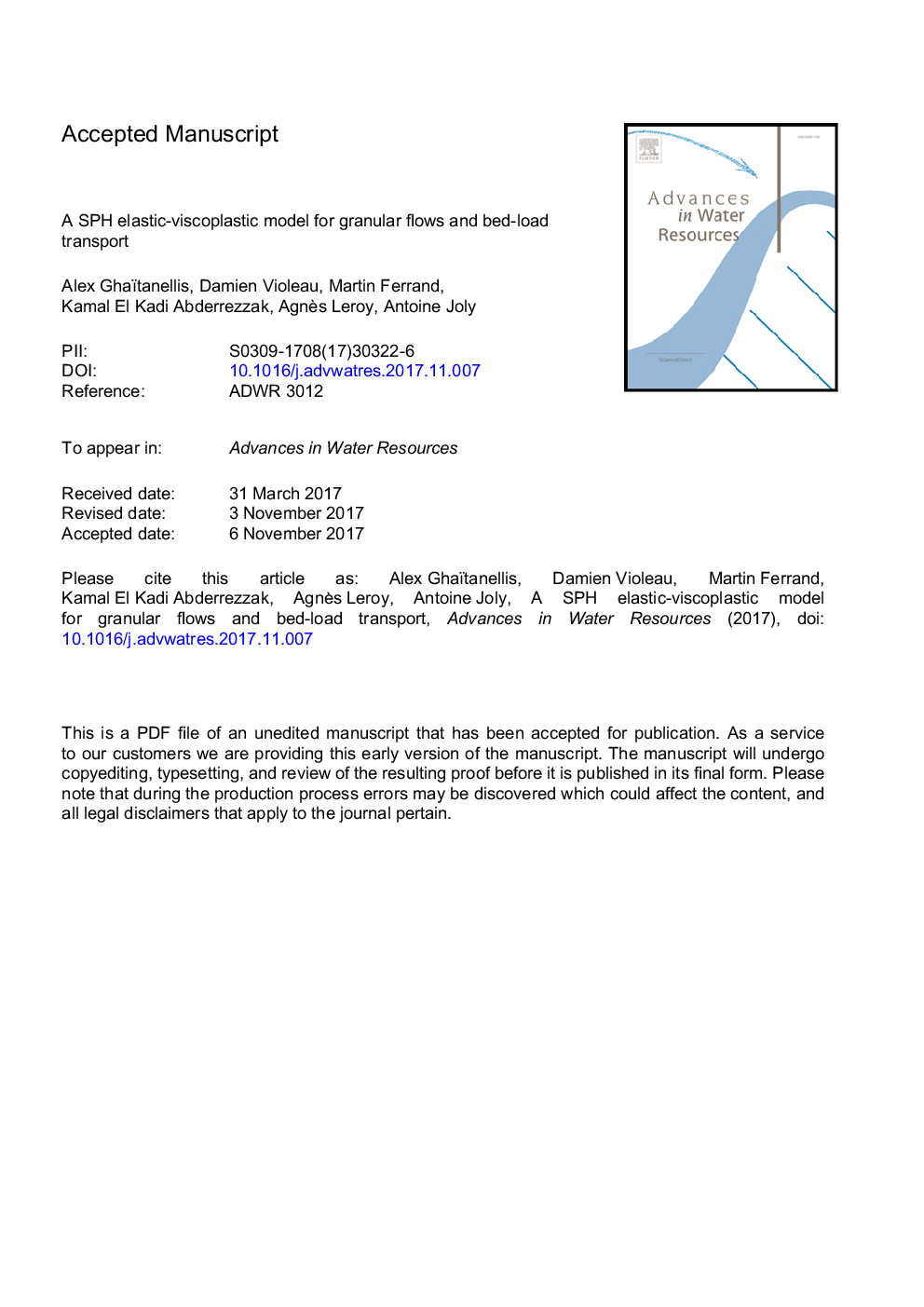| Article ID | Journal | Published Year | Pages | File Type |
|---|---|---|---|---|
| 8883403 | Advances in Water Resources | 2018 | 60 Pages |
Abstract
An elastic-viscoplastic model (Ulrich, 2013) is combined to a multi-phase SPH formulation (Hu and Adams, 2006; Ghaitanellis et al., 2015) to model granular flows and non-cohesive sediment transport. The soil is treated as a continuum exhibiting a viscoplastic behaviour. Thus, below a critical shear stress (i.e. the yield stress), the soil is assumed to behave as an isotropic linear-elastic solid. When the yield stress is exceeded, the soil flows and behaves as a shear-thinning fluid. A liquid-solid transition threshold based on the granular material properties is proposed, so as to make the model free of numerical parameter. The yield stress is obtained from Drucker-Prager criterion that requires an accurate computation of the effective stress in the soil. A novel method is proposed to compute the effective stress in SPH, solving a Laplace equation. The model is applied to a two-dimensional soil collapse (Bui et al., 2008) and a dam break over mobile beds (Spinewine and Zech, 2007). Results are compared with experimental data and a good agreement is obtained.
Related Topics
Physical Sciences and Engineering
Earth and Planetary Sciences
Earth-Surface Processes
Authors
Alex Ghaïtanellis, Damien Violeau, Martin Ferrand, Kamal El Kadi Abderrezzak, Agnès Leroy, Antoine Joly,
